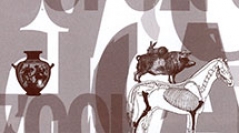

 Anthropozoologica
43 (1) - Pages 99-116
Anthropozoologica
43 (1) - Pages 99-116The southern Ethiopian highlands are one of the last remaining places where stone tools, in form of scrapers, are still made and used on a regular basis to process hides. An ethnoarchaeological project was led between 2001 and 2003 in the Konso region to undertake detailed life-cycle studies to the hide process, carry out ethnographic research on past and present Kono hide workers and excavate historic and recently abandoned hide workers households. In this project I have conducted the archaeozoological study of all the faunal evidence found in two abandoned household: Gotcha-Chirayo and Gotcha-Ayenna. These sites have offered a large number of faunal remains (79 970 for both sites). Cattle and caprines are highly dominant in both faunal spectrums; only few bones of chicken and wild bovids complete collections. The use of animals seems to be linked to diet and craft. Thus, skeleton parts frequencies as well as the distribution of cutting marks and the bones concentrations near hearths, testify consumption with a complete or partial provision of animals on the sites. Moreover, these results associated with the large number of stone scrapers found on both sites attest to hides tanning. These data confirm the double status of bovines and caprines (consumption and hideworking) already established by ethnographical sources and bring new information on the evolution of animal?s uses during the history of those two hide workers households.
Ethiopia, livestock, tanning, consumption, ethnoarchaeozoology.